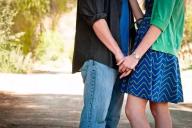Why beets don't grow: looking for reasons and solutions
Beetroot is a popular root vegetable that is often grown in home gardens.
This unpretentious vegetable is valued for its taste and beneficial properties.
However, even experienced gardeners sometimes face the problem when beets stop growing and do not form large root crops, says Anastasia Kovrizhnykh .
It is important for gardeners to know why beet growth slows down and how to solve this problem.
Nutrient deficiencies
One of the most common reasons for slow beet growth is a lack of nutrients in the soil.

Beets need a balanced diet that includes nitrogen, phosphorus and potassium. Nitrogen is needed for the growth of green mass, phosphorus is needed for the development of the root system, and potassium is needed to form large and sweet root crops.
If the soil is poor in nutrients, beets will grow slowly, the leaves will be pale, and the roots will be small and tasteless.
To provide beets with the necessary nutrients, regular fertilizing is recommended. In the spring, during the period of active growth, nitrogen fertilizers should be used.
During the period of root formation, it is necessary to apply phosphorus-potassium fertilizers. It is also useful to use organic fertilizers, such as humus or compost, which improve the soil structure and enrich it with nutrients.
Soil acidity
Beets prefer neutral or slightly alkaline soil with a pH level of 6 to 7. Beets do not grow well in acidic soil, as these conditions make it difficult for the plant to absorb nutrients.
In addition, an acidic environment favors the development of certain diseases, such as phoma. If the soil on your site is acidic, it is necessary to apply lime to bring the pH level to optimal values.
Liming is best done in the fall, after harvesting. Dolomite flour, chalk or slaked lime can be used for this. The dosage of lime depends on the soil acidity level and mechanical composition.
Incorrect watering
Beets need regular watering, especially during the period of active growth. However, both a lack and an excess of moisture can negatively affect the development of plants.
If there is a lack of moisture, beet leaves become wilted and the roots become small and woody.
If there is too much moisture, the roots may rot, which also slows down growth. Beets should be watered moderately, keeping the soil moist.
The optimal watering regime depends on weather conditions and soil type.
In hot and dry weather, beets need to be watered more often than in cool and damp weather. On sandy soils, watering should be done more often than on clay soils. It is best to water beets in the morning or evening to avoid moisture evaporation.
Thickened plantings
Beets need sufficient space to develop their root system. When planted too close together, plants compete with each other for light, water and nutrients, which leads to slower growth and lower yields.
When sowing beets, you should maintain the recommended distance between plants, which is usually 10-15 cm.
It is also important to thin out the seedlings in a timely manner, removing weak and diseased plants.
This will allow the remaining plants to receive more light, water and nutrients, which will have a positive effect on their growth and development.
Earlier we talked about growing sunflowers in the country .
